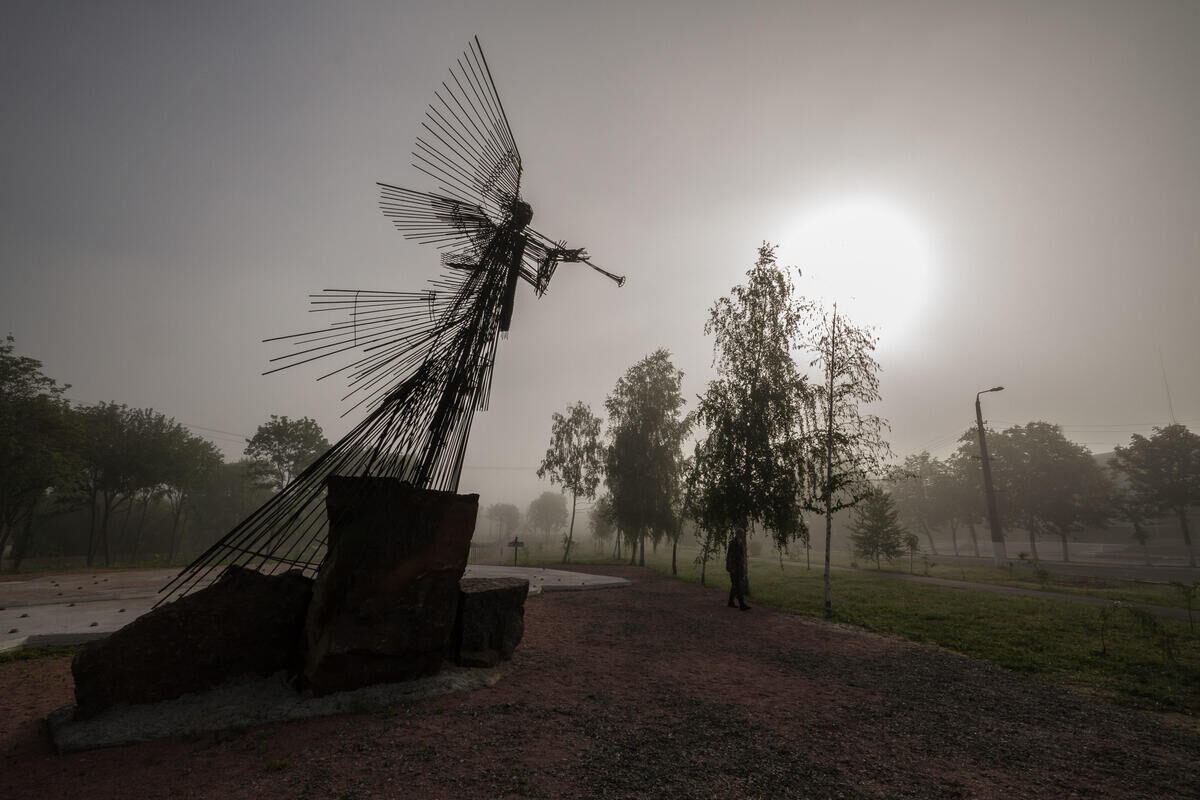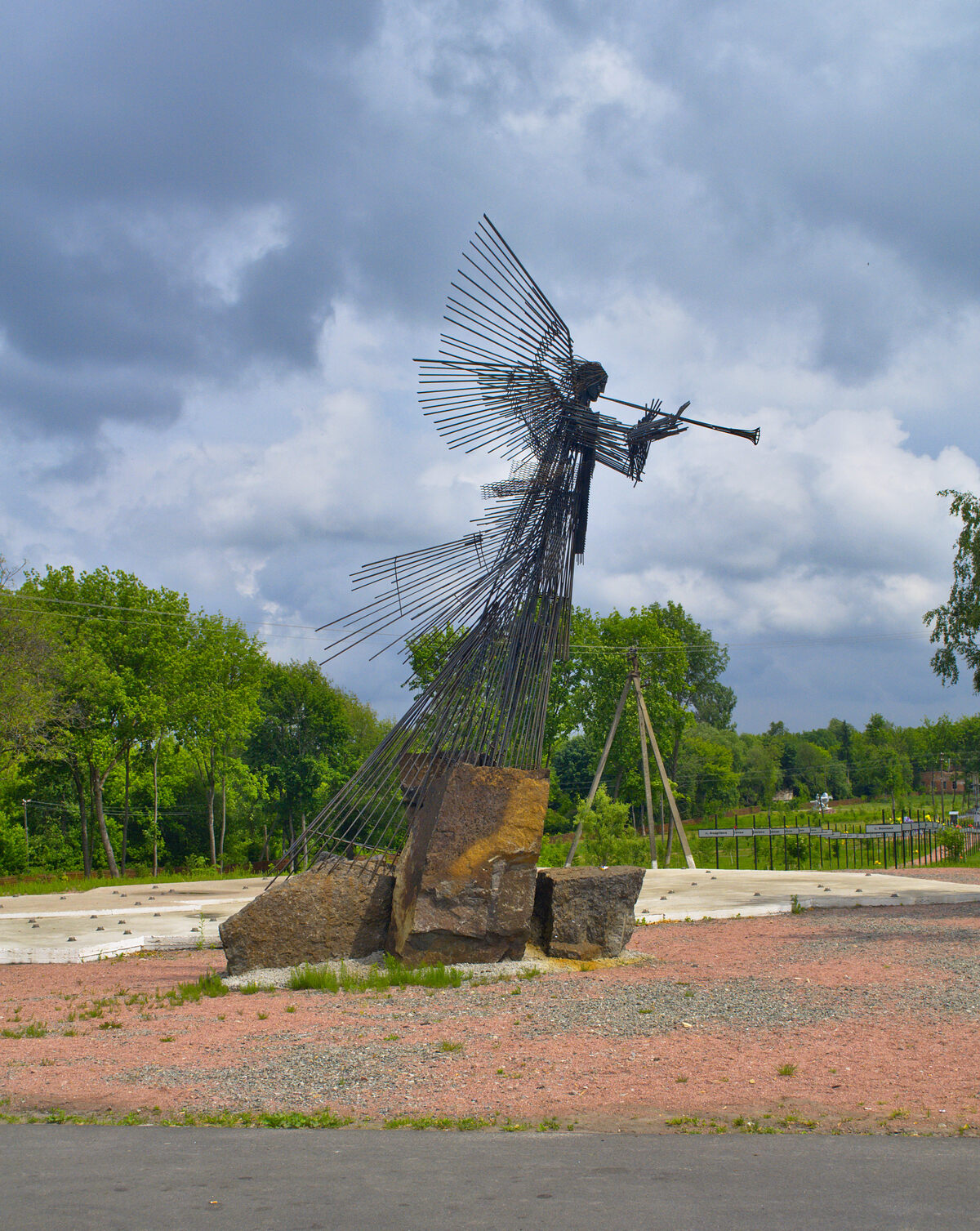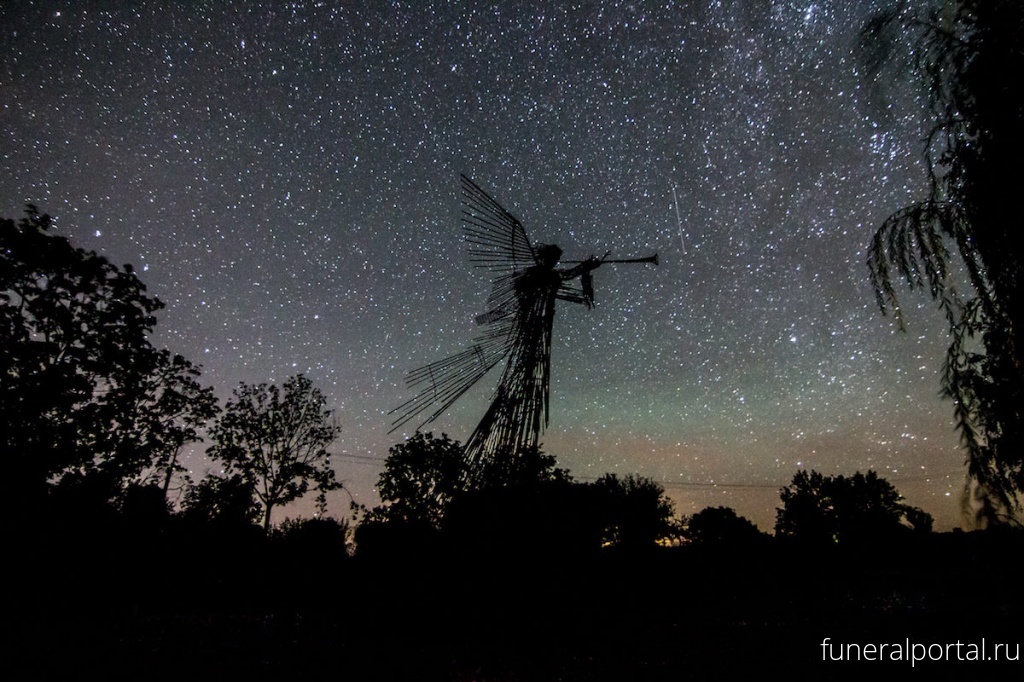



CHERNOBYL, UKRAINE
The biblical sculpture honors those who died combating the Chernobyl disaster.
A lonely angel stands atop this stretch of toxic earth, a trumpet pressed to her lips in a silent song. The sculpture, created by Ukranian artist Anatoly Haidamaka, is a poignant tribute to those who perished in one of the world’s worst nuclear disasters.
On April 26, 1986, a safety test on a reactor at the Chernobyl Nuclear Power Plant near Pripyat, Ukraine, went terribly wrong, resulting in a steam explosion followed by an epic inferno. The area was rendered an apocalyptic hellscape, with flames licking the nuclear plant for 10 straight days. Radioactive smoke swirled through the air, poisoning the firefighters dispatched to combat the blaze.
Many of the firefighters, or liquidators, were unaware of the true nature of the task, at first believing it was another ordinary fire. They battled the toxic flames, their skin blistering as their insides roiled, their immune systems weakening as their bone marrows struggled to produce infection-fighting white blood cells. Twenty-nine people died from acute radiation sickness in the days after the disaster, with hundreds more falling ill in the weeks to come.
“Monument of the Third Angel” not only honors the people who risked it all to combat the catastrophe, it also adds a biblical edge to the events. Its name was inspired by a passage from the New Testament, Revelation 8:10-11:
“And the third angel sounded, and there fell a great star from Heaven, burning as it were a lamp, and it fell upon the third part of the rivers, and upon the fountains of waters; And the name of the star is called Wormwood: and the third part of the waters became wormwood; and many men died of the waters, because they were made bitter.”
Because of the reference to wormwood, people began speculating that the Bible predicted the disaster. A theory spread that Chernobyl was named for the Ukranian word for wormwood (Artemisia absinthium), the plant that just so happens to be mentioned in the passage. But the city’s name is actually the Ukranian word for mugwort (Artemisia vulgaris), which is related to—though not quite the same as—wormwood.
Know Before You Go
It's possible to visit the Chernobyl Exclusion Zone, though tours are tightly regulated.

 Kerry Wolfe
Kerry Wolfe






